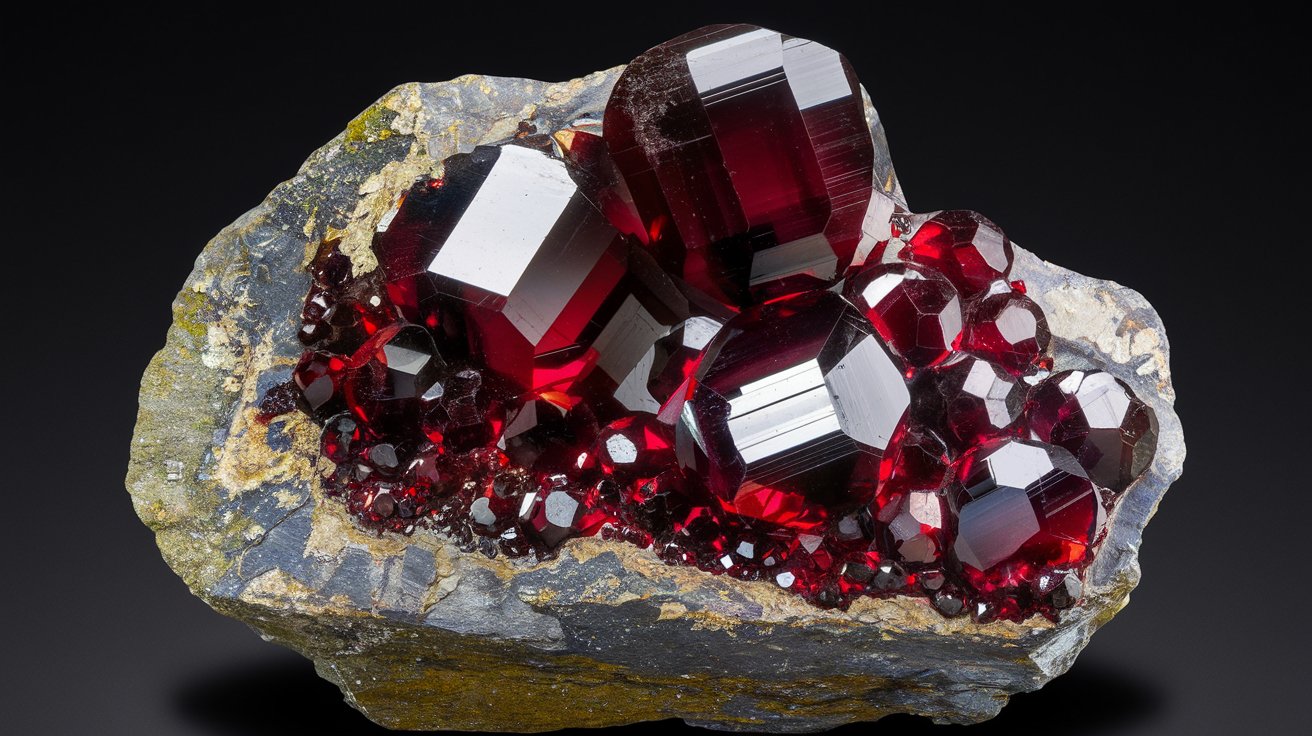
What is Alleghanyite? Alleghanyite is a moderately rare mineral that belongs to the humite group of nesosilicates. Known for its unique chemical composition, it primarily consists of manganese, silicon, oxygen, and hydroxide ions, with the formula Mn5(SiO4)2(OH)2. This mineral typically forms in metamorphic manganese deposits, showcasing colors like brown, bright pink, grayish pink, and white. Its monoclinic crystal system and prismatic crystal class give it distinct structural characteristics. With a Mohs hardness of 5 to 6, it is relatively hard and has a vitreous luster. Named after Alleghany County, North Carolina, this mineral holds significant geological interest.
Key Takeaways:
- Alleghanyite is a rare mineral with a unique chemical formula and physical properties. It's found in metamorphic manganese deposits and named after Alleghany County, North Carolina, USA.
- Alleghanyite's crystal structure, color variations, and non-fluorescent nature make it a fascinating mineral to study. Its discovery in North Carolina adds to its geological significance.
What is Alleghanyite?
Alleghanyite is a fascinating mineral with a unique chemical composition and intriguing properties. Let's dive into some key facts about this moderately rare mineral.
-
Chemical Formula
Alleghanyite's chemical formula is Mn5(SiO4)2(OH)2. This means it contains manganese, silicon, oxygen, and hydroxide ions. -
Classification
It belongs to the nesosilicates class and is part of the humite group. This classification helps scientists understand its structure and composition. -
IMA Symbol
The International Mineralogical Association (IMA) symbol for alleghanyite is Alh. This shorthand is used in scientific literature. -
Strunz Classification
In the Strunz classification system, alleghanyite is categorized as 9.AF.45. This system groups minerals based on their chemical composition and structure. -
Dana Classification
In the Dana classification system, it is listed as 52.3.2b.1. This is another way to categorize minerals based on their properties.
Crystal Structure and Physical Properties
Understanding the crystal structure and physical properties of alleghanyite can give us insights into its formation and uses.
-
Crystal System
Alleghanyite crystallizes in the monoclinic crystal system. This means its crystal lattice has three unequal axes, with one of them inclined. -
Crystal Class
Its crystal class is prismatic (2/m), indicating its symmetry and optical properties. -
Space Group
The space group of alleghanyite is P21/a. This defines the three-dimensional arrangement of atoms within the crystal. -
Unit Cell Dimensions
The unit cell dimensions are a = 10.46 Å, b = 4.86 Å, c = 8.3 Å, and β = 109.133°, with a Z value of 2. This tells us about the size and shape of the smallest repeating unit in the crystal. -
Formula Mass
The formula mass of alleghanyite is 492.87 g/mol. This is the molecular weight of the mineral.
Appearance and Physical Characteristics
The appearance and physical characteristics of alleghanyite make it unique among minerals.
-
Color
Alleghanyite can be brown, bright pink, grayish pink, or white. The color can vary depending on impurities or other minerals present. -
Crystal Habit
Its crystal habit is typically granular, with anhedral to subhedral crystals often found in a matrix. This means the crystals are usually not well-formed. -
Cleavage
Alleghanyite does not exhibit any cleavage. This means it does not break easily along specific planes. -
Fracture
The fracture of alleghanyite is conchoidal. This means it breaks with smooth, curved surfaces. -
Tenacity
Alleghanyite is brittle. It breaks easily when struck. -
Mohs Scale Hardness
Its hardness ranges from 5 to 6 on the Mohs scale. This indicates its relative hardness compared to other minerals. -
Luster
Alleghanyite has a vitreous luster. This means it has a glass-like appearance. -
Diaphaneity
The diaphaneity of alleghanyite is transparent to translucent. This means it allows some light to pass through but is not completely clear. -
Specific Gravity
Its specific gravity is approximately 4 (measured) and 4.11 (calculated). This indicates its density relative to water.
Optical Properties
The optical properties of alleghanyite provide more details about its behavior under light.
-
Optical Properties
Alleghanyite is biaxial (-). This means it has different refractive indices along different axes. The refractive indices are nα = 1.756, nβ = 1.78, and nγ = 1.792. -
Birefringence
The birefringence of alleghanyite is 0.036. This measures the difference in refractive indices. -
2V Angle
The 2V angle is measured to be 72° and calculated to be 68°. This provides information about its optical properties. -
Fluorescence
Alleghanyite is non-fluorescent. It does not emit light when exposed to ultraviolet radiation.
Occurrence and Name Origin
Where alleghanyite is found and how it got its name adds to its story.
-
Occurrence
Alleghanyite is typically found in metamorphic manganese deposits. This indicates its formation under high-pressure and high-temperature conditions. -
Name Origin
The mineral is named after Alleghany County, North Carolina, USA. This reflects its discovery and geographical significance.
Final Thoughts on Alleghanyite
Alleghanyite is a fascinating mineral with a unique blend of properties. Its chemical formula Mn5(SiO4)2(OH)2 and classification in the humite group make it stand out. Found in metamorphic manganese deposits, it crystallizes in the monoclinic system with a prismatic crystal class. The mineral's colors range from brown to bright pink, and it has a vitreous luster. With a Mohs hardness of 5 to 6, it's relatively durable but brittle. Its specific gravity of around 4 and biaxial optical properties add to its uniqueness. Named after Alleghany County, North Carolina, this mineral offers much for geologists and mineral enthusiasts to explore. Whether you're interested in its crystal habit, fracture, or optical properties, alleghanyite provides a rich subject for study.
Frequently Asked Questions
Was this page helpful?
Our commitment to delivering trustworthy and engaging content is at the heart of what we do. Each fact on our site is contributed by real users like you, bringing a wealth of diverse insights and information. To ensure the highest standards of accuracy and reliability, our dedicated editors meticulously review each submission. This process guarantees that the facts we share are not only fascinating but also credible. Trust in our commitment to quality and authenticity as you explore and learn with us.


